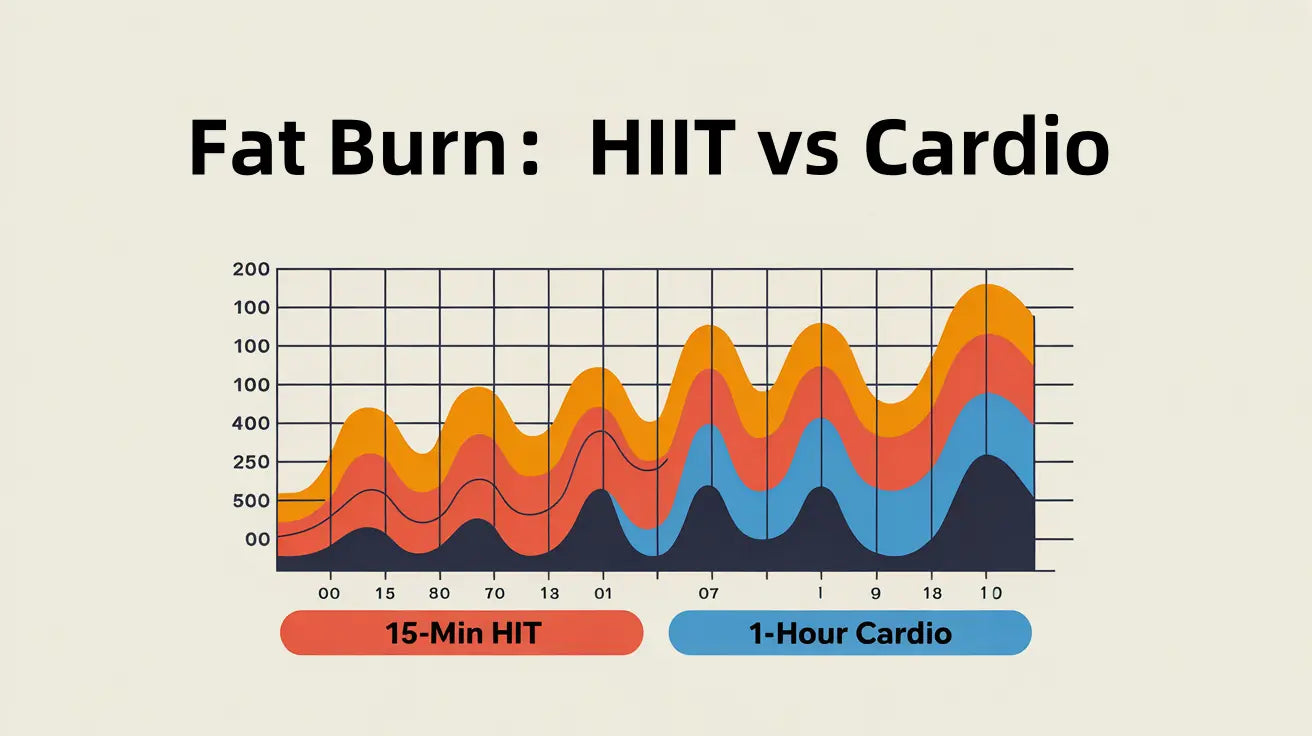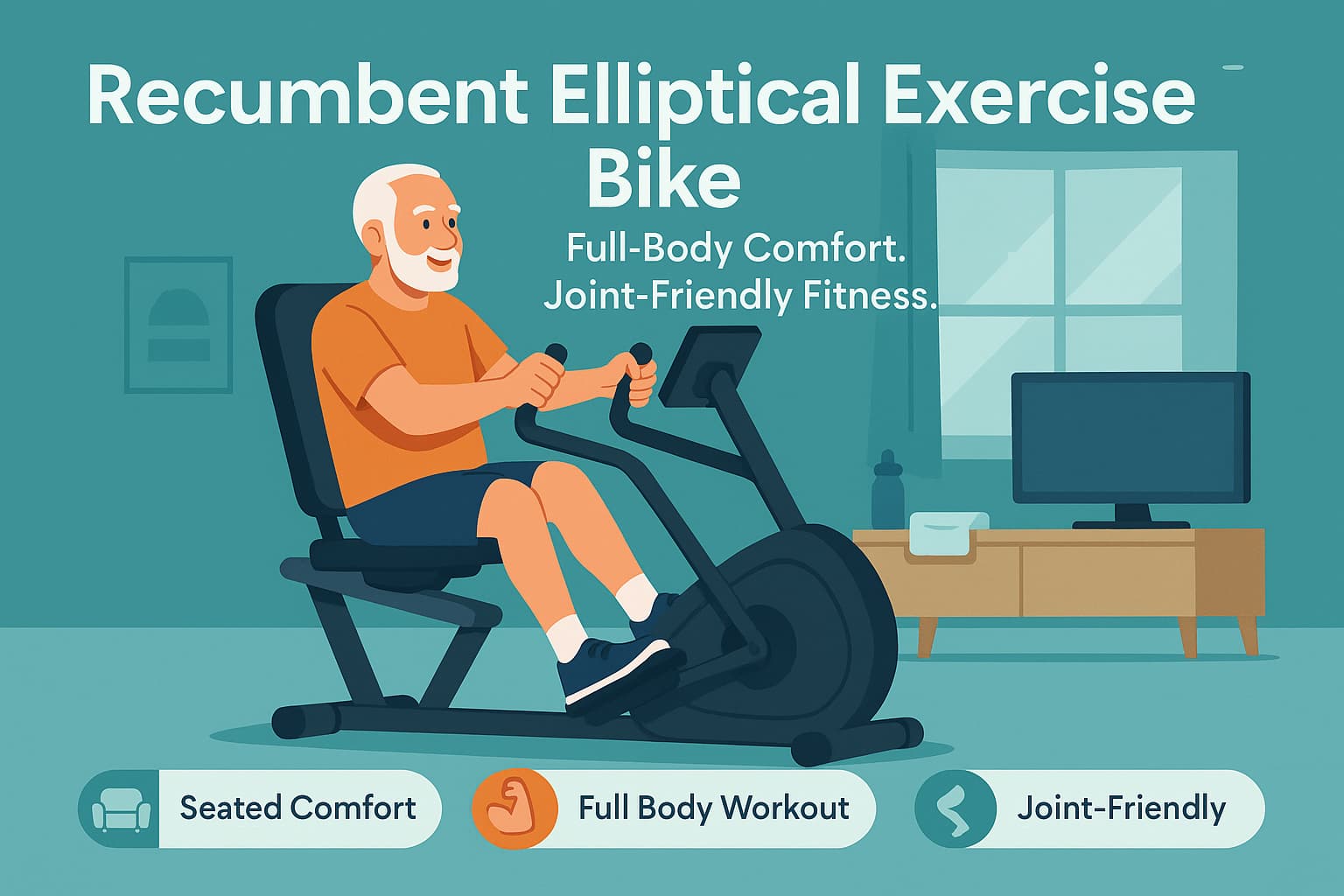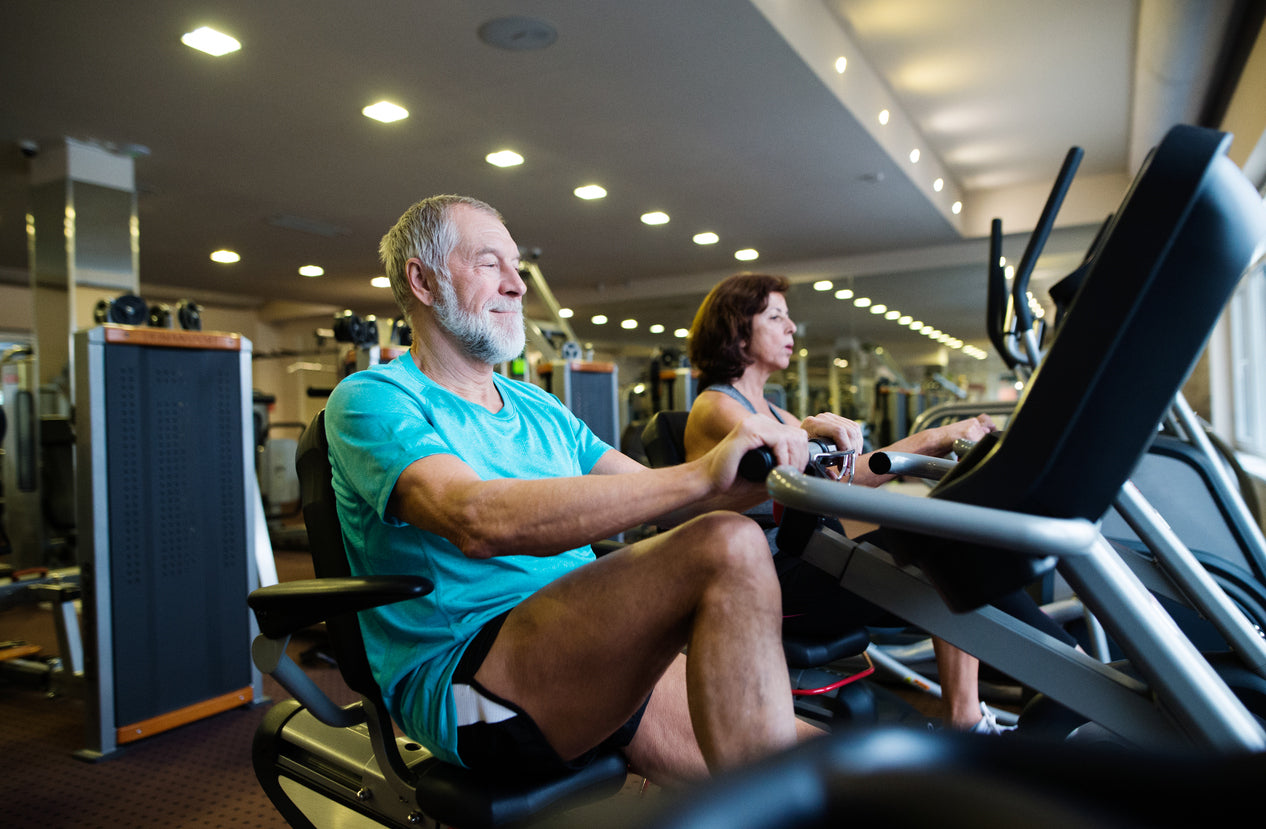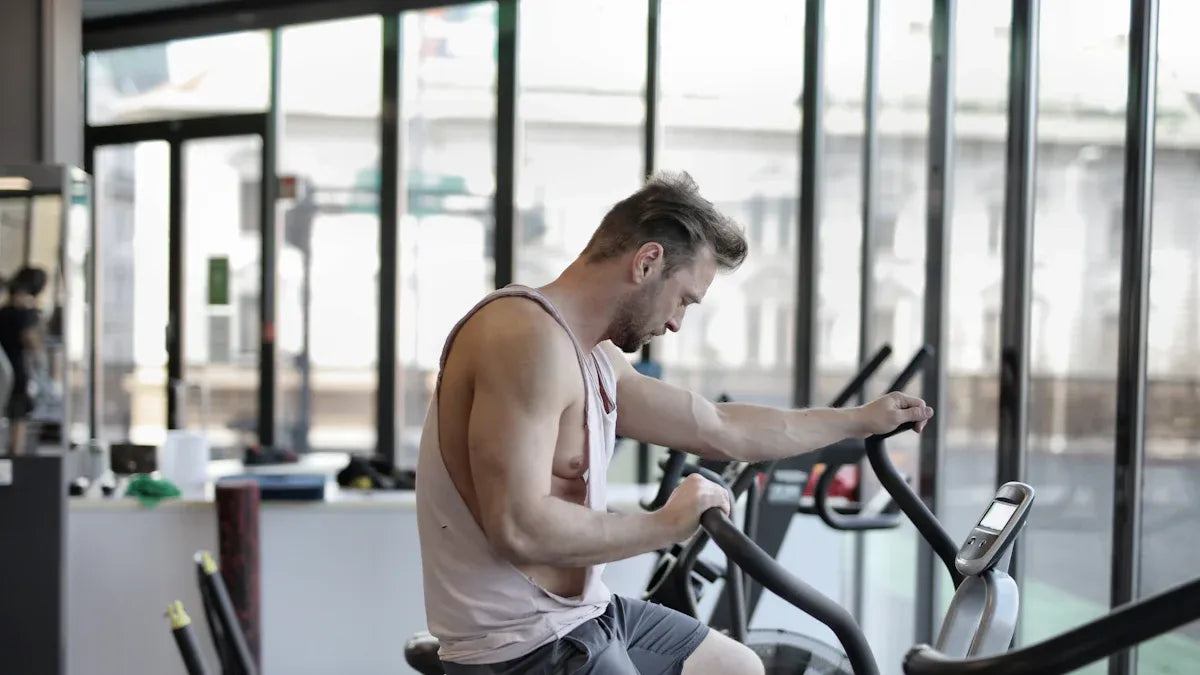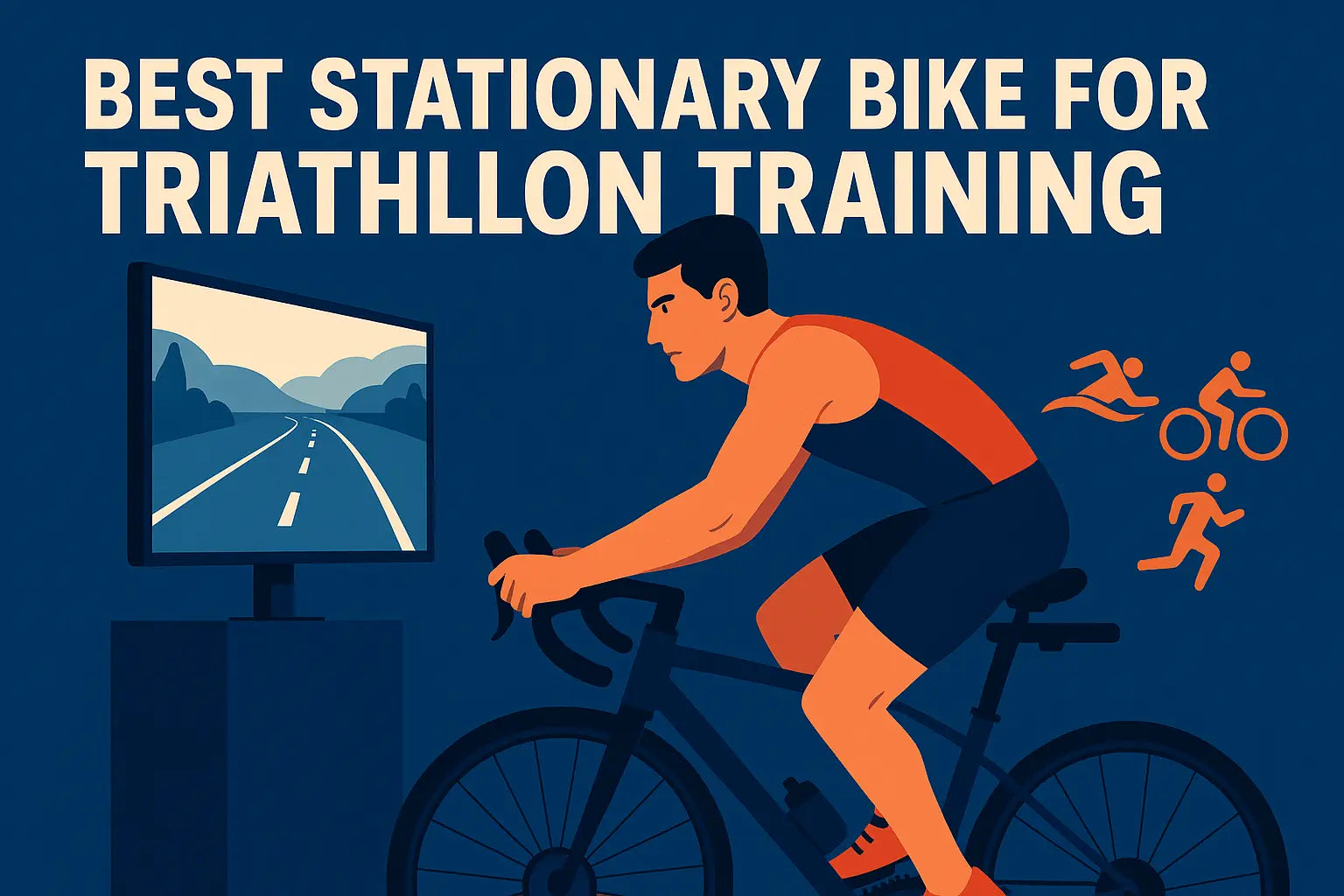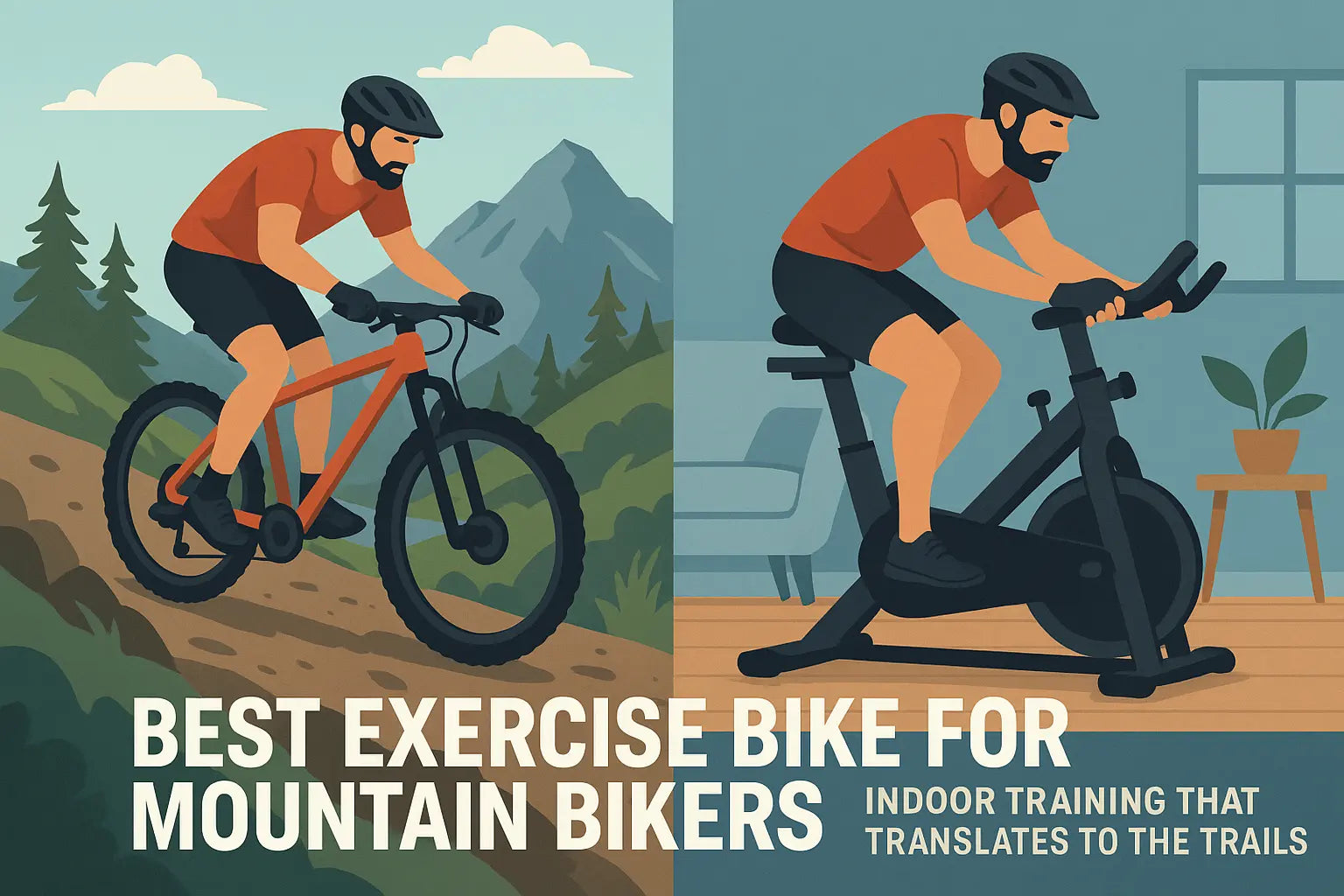High-intensity interval training (HIIT) on a recumbent bike is one of the safest and most effective ways to burn fat and boost cardiovascular fitness at home. The reclined seat and back support reduce strain on your spine and joints, so you can push hard during sprints without the discomfort often caused by upright bikes or treadmills.
This low-impact setup makes HIIT accessible not only to beginners but also to seniors and anyone recovering from joint or back issues. By combining comfort with powerful calorie-burning intervals, a stationary recumbent bike offers an ideal balance between intensity and safety—setting the stage for a workout plan you can actually stick with.
Why Do HIIT on a Recumbent Bike?
HIIT burns more fat than steady-state cardio in less time. While steady-state cardio burns calories during the workout, HIIT boosts your metabolism for hours afterward through the EPOC effect (Excess Post-exercise Oxygen Consumption), allowing your body to continue burning fat even at rest. Compared to steady-state cardio, HIIT helps create a calorie deficit, which is essential to lose weight, by burning more calories both during and after the workout. The recumbent exercise bike allows more people to enjoy the benefits of high-intensity interval training without the risk of joint pain or strain. So it is suitable for all fitness levels, from beginners to experienced exercisers alike.
Source: Umbrella review by Poon et al. (2024) in the Scandinavian Journal of Medicine & Science in Sports, “High-Intensity Interval Training and Cardiorespiratory Fitness in Adults” [1]
Source: European Journal of Applied Physiology study by Astorino & Schubert (2018), “Changes in Fat Oxidation with Different HIIT Protocols” [2]
How to Do HIIT on a Recumbent Bike
To do HIIT on a recumbent bike, alternate between short bursts of high-resistance pedaling at increased speed and periods of low-resistance recovery at a lower intensity. Start with a warm-up at a leisurely pace, maintaining a steady pace to gradually raise your heart rate. During the intervals, adjust your speed and intensity—alternate between low intensity and high intensity to train different energy systems and improve overall fitness. You can also use built-in workout programs on the recumbent bike to guide your interval training for more structure and motivation.

20 Minute Recumbent Bike Workout
This 20-minute recumbent bike workout includes a 3-minute warm-up, six rounds of 30-second sprints with 90-second recovery periods, and a 3-minute cool-down.
| Phase | Duration | Description |
|---|---|---|
| Warm-Up | 3 min | Pedal at low resistance to raise your heart rate |
| Interval 1 | 30 sec | Sprint: increase resistance + pedal faster |
| Recovery 1 | 90 sec | Reduce resistance and pedal slowly |
| Repeat | 6 rounds | Alternate sprint and recovery |
| Cool-Down | 3 min | Light pedaling to gradually lower heart rate |
Tips:
- A typical HIIT session can be completed in under 20 minutes, making it a time-efficient option for busy schedules. Moderate-intensity exercise for thirty minutes can burn between 200 and 300 calories, supporting fat loss and overall fitness.
- You can simulate riding on hills by increasing the resistance or incline settings on your recumbent bike to enhance your workout.
- Aim to reach 80–90% of your maximum heart rate during the sprint intervals. Use a fitness tracker or heart rate monitor for accuracy.
30-Minute Recumbent Bike HIIT Workout
| Phase | Duration | Description |
|---|---|---|
| Warm-Up | 5 min | Pedal at low resistance to gradually increase your heart rate and loosen your muscles. |
| Sprint Interval | 30 sec | Increase resistance and pedal at maximum effort (aim for 80–90% max heart rate). |
| Recovery | 90 sec | Lower resistance and pedal at an easy pace to catch your breath. |
| Repeat | 8 rounds | Alternate between sprint and recovery for a total of 16 minutes. |
| Moderate Steady Ride | 6 min | Pedal at moderate resistance for a steady, fat-burning pace. |
| Cool-Down | 3 min | Light pedaling at low resistance to gradually bring your heart rate down. |
Tips
-
Calorie Burn: A 30-minute moderate-to-high-intensity session can burn 250–400 calories, depending on your weight, resistance, and effort.
-
Hill Simulation: Increase resistance during the steady-ride phase to mimic uphill riding for greater muscle engagement.
-
Heart Rate Tracking: Use a heart rate monitor to keep sprint intervals in the 80–90% max range.
Progression Plans: Beginners to Advanced
You can progress your recumbent bike HIIT workouts by gradually increasing intensity and reducing recovery time. Beginners should start with shorter intervals and longer rests. As fitness improves, except change recumbent bike exercise plan, you can add more rounds, extend sprint durations, raise resistance, or shorten recovery periods for greater challenge and fat-burning results. Many recumbent bikes also offer built-in workout programs that guide users from beginner to advanced routines, making progression structured and motivating.
As your fitness improves, increase the intensity in one of the following ways:
- Shorten the recovery time (e.g., 60 seconds instead of 90)
- Increase sprint duration (e.g., 45–60 seconds)
- Add more intervals (e.g., 8–10 total rounds)
- Raise the resistance level during sprints
Recommended Frequency: Start with 2 sessions per week. Over time, you can build up to 3–4 HIIT sessions weekly, depending on your recovery and fitness goals.
Source: BMC Pediatrics protocol study by Duncombe et al. (2022), “Making a HIIT: Co-Designing HIIT Workouts with Students and Teachers” [3]
Common Mistakes to Avoid
Common mistakes during recumbent bike HIIT include skipping warm-ups, incorrect recumbent bike seat position, and training in the wrong heart rate zone. These errors can reduce workout effectiveness and increase the risk of discomfort or injury. Adjusting the seat properly and using a recumbent bike can help reduce saddle soreness and improve ergonomic support during workouts. To get the best results, follow proper form while exercising, allow for recovery, and stay within your target intensity zone.
- ❌ Skipping warm-up and cool-down
- ❌ Overtraining without rest days
- ❌ Using poor posture on the bike
- ❌ Training in the wrong heart rate zone (too low = less effective)
After exercising, it’s important to consume adequate protein to support muscle recovery and retention.
If you’re new to exercise, have a heart condition, or are over 60, consult your healthcare provider before starting a HIIT routine.
Source: Systematic review by Leite et al. (2023) in the International Journal of Environmental Research and Public Health, “Exercise-Induced Muscle Damage after a HIIT Session” [4]
Fuel Your Fitness Journey with Nutrition and Recovery
For best results, combine your HIIT workouts with smart nutrition and recovery habits:
- 🥗 Pre-workout: Light carbs for energy (e.g., a banana or oatmeal)
- 🍗 Post-workout: Protein-rich food for muscle repair (e.g., eggs, protein shake)
- 😴 Sleep: Aim for 7–9 hours per night to support recovery
- 💧 Hydration: Drink water before, during, and after your ride
Source: European Journal of Applied Physiology review by Markus et al. (2021), "Exercise-Induced Muscle Damage and Nutritional Recovery Strategies" [5]
Conclusion
A recumbent bike HIIT workout offers the best of both worlds: the fat-burning power of intervals and the comfort of a supportive, reclined seat. Whether you're new to fitness or looking for a safer way to push your limits, this workout can help you torch calories and build endurance—without the joint pain.
Reference
- Poon, E. T.-C., Li, H.-Y., Gibala, M. J., Wong, S. H.-S., & Ho, R. S.-T. (2024). High-intensity interval training and cardiorespiratory fitness in adults: An umbrella review of systematic reviews and meta-analyses. Scandinavian Journal of Medicine & Science in Sports.
- Astorino, T. A., & Schubert, M. M. (2018). Changes in fat oxidation in response to various regimes of high intensity interval training (HIIT). European Journal of Applied Physiology, 118(1), 51–63.
- Duncombe, S. L., Barker, A. R., Price, L., Walker, J. L., Dux, P. E., Fox, A., Matthews, N., & Stylianou, M. (2022). Making a HIIT: Study protocol for assessing the feasibility and effects of co-designing high-intensity interval training workouts with students and teachers. BMC Pediatrics, 22, Article 490.
- Leite, C. D. F. C., Zovico, P. V. C., Rica, R. L., Barros, B. M., Machado, A. F., Evangelista, A. L., Leite, R. D., Barauna, V. G., Maia, A. F., & Bocalini, D. S. (2023). Exercise-induced muscle damage after a high-intensity interval exercise session: Systematic review. International Journal of Environmental Research and Public Health, 20(22), 7082.
- Markus, I., Constantini, K., Hoffman, J. R., Bartolomei, S., & Gepner, Y. (2021). Exercise-induced muscle damage: Mechanism, assessment and nutritional factors to accelerate recovery. European Journal of Applied Physiology, 121(4), 929–948.
Latest Articles

